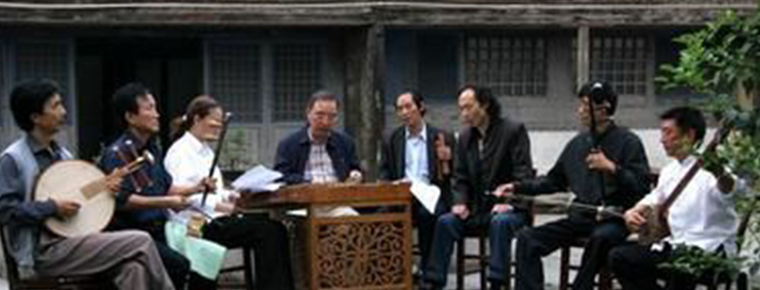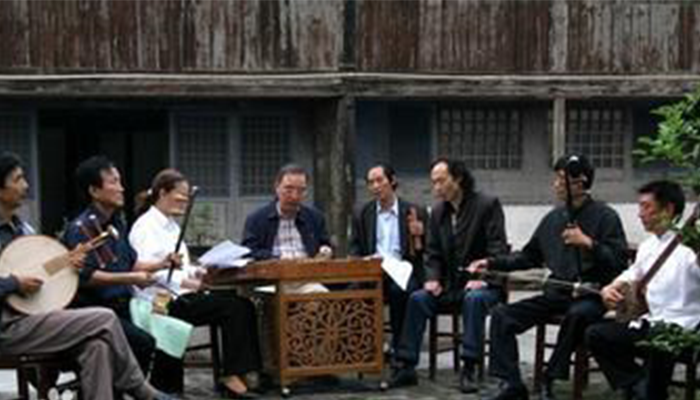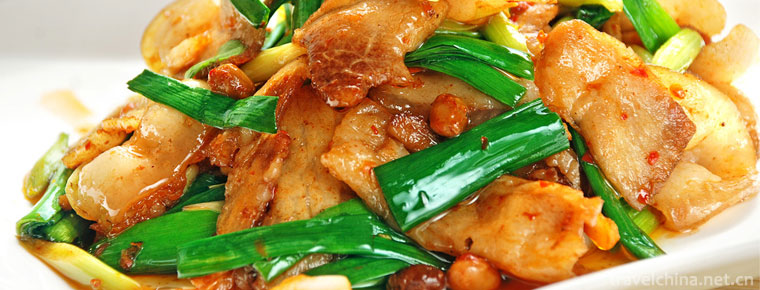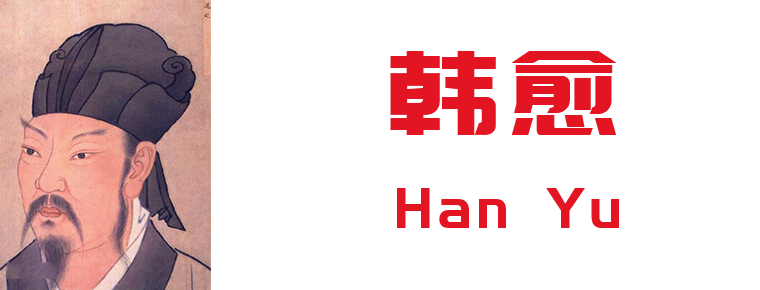2018-10-12

- By ChinaWiki.net
- Chinese Edition
- 2019-04-28
Enshi dulcimer
Enshi Yangqin, also known as Enshi Silk String, was made up of Hunan Opera, Southern Opera, Chu Tune, folk minor, instrumental music licensing scholars and musicians in the late Qing Dynasty. Mainly popular in Enshi, Xianfeng, Xuan'en, Laifeng, Lichuan and other places, is one of the important folk songs in Hubei Province.
On June 7, 2008, Enshi Yangqin declared by Enshi City of Hubei Province was listed in the second batch of national intangible cultural heritage list with the approval of the State Council.
Heritage serial number: 767 V-74.
historical origin
Enshi Yangqin, also known as Enshi silk string. Spread in Enshi Tujia and Miao Autonomous Prefecture, Enshi, Xianfeng, Lichuan, Laifeng, Xuan En and other counties, but where, when, no words can be found, artists have different opinions. First, during the Qing Guangxu period, there was an artist from Sichuan, known as Mr. Zhang, who once organized a class in Enshi County, and then introduced the Yangqin to Enshi. One is the father of the famous artist Zhan Zifan, who was once the Zhifu of Zunyi in Guizhou during Guangxu's reign. He brought back Yangqin from Guizhou because he loved qin, chess, calligraphy and painting.
He passed on his skills to Zhan Zifan, and later was taught by Zhan Zifan in Enshi's group, singing with artists surnamed Zhang, so that Yangqin could be spread in Enshi. First, in 1751, Gaozong Hongli toured the south of Qianlong in Qing Dynasty. He held a piano music rally in Yangzhou to see the high Festival and elegance of the yangqin, and then brought the Yangqin back to the court. Tongzhi five years (1866), Sichuan alternate Tong sentenced Qin Yunlong (Xianfeng Dingzhai people) to enter Beijing, Nage female Kang as concubine, by Kang's Yangqin into Sichuan. Tongzhi 10 years (1871), Mrs. Qin Yunlong Liu returned home, and brought the Yangqin back to Xianfeng. So the dulcimer was spread from Dingzhai.
After the introduction of Yangqin into Enshi area, some fans have established Qin clubs successively in Enshi, Xianfeng, Lichuan, Laifeng, Xuan En and other counties. They organized a "hall meeting" (also known as "transfer") and regularly sang at their friends'homes. Zheng Xiaozhai, Lu Jianqiu, Jin Ruzhai, Deng Dingqing and Jane Peisheng went to Lichuan and Xuan En to exchange piano skills with local Yangqin enthusiasts. Zhu Yuncheng, Fu Yunqing and other Yangqin enthusiasts from Lichuan and Laifeng also came to Enshi, such as Liu Chunan, Zhu An and Wang Sigu. People in the family know each other by playing the piano and participate in their singing activities. Enshi County has gradually become the center of Yangqin singing activities.
After the introduction of Yangqin to Xianfeng, it sang in the Qin family, then extended to close relatives and friends, and then from close relatives and friends to Qin family in Tangwan, Qinggangshu Dengjia, Tuping traveler, Jianshan Mixed Water Dangxiang family, Chengguan Zhonghe Tang pharmacy Liu family. In 1930, Xianfeng's Qin friends held a "Qin Festival" on August 15 in the ancient temple of Gaoshan, named "Boya Festival", and later regularly invited to sing in the Mid-Autumn Festival.
In 1920, an artist named Yang Zhiqing came to Lichuan from Enshi with his back to the Yueqin. He was good at singing "Yueyue Tune" in the dulcimer. He could play and sing many traditional tunes of the dulcimer by himself. One person could sing the whole version of "Shui Man Jinshan". He met his intimate friend Ye Songpu in the county town, and was highly appreciated by Lichuan Yangqin enthusiasts Zhu Huafeng, Guo Aili, Xu Shicheng and others, forcing him to teach Yangqin skills in Lichuan, thus promoting Lichuan's Yangqin singing activities. Later, the Yangqin was transferred from Lichuan City to Wang Yingxiang. In 1936, Lichuan Yangqin enthusiasts established amateur organizations such as "National Music Research Society" and "Shousheng Association".
Around 1935, the Yangqin singing activities of Laifeng also flourished. In 1945, Yangqin fans set up the "Silk String Society" and sang songs such as "Boya Ciqin", "Water Man Jinshan" and "Three Difficulties Groom". To commemorate Zhongzi Period and Yu Boya, Yangqin fans from Laifeng also regularly gather to sing the Yangqin on the Mid-Autumn Festival on August 15. The Yangqin's singing activities are also very active in Xuan Ensha Daogou, which is adjacent to Laifeng. The friends of the Yangqin often invite each other to sing.
Most of the singers of Yangqin are scholars and businessmen. They always use elegance to describe themselves. Therefore, in history, Yangqin has never formed professional classes or artists who use it as a means of livelihood. No "noisy hall", no tea house, no singing in public. Yangqin's singing activities are mostly confined to friends and relatives, as well as intimate friends and friends in the same street. Therefore, Yangqin enthusiasts have the saying that "singing Wugeng chicken, non-friends do not play the piano".
Yangqin is the main instrument of Enshi Yangqin singing. It ranks first among all accompanying instruments. Artists call it "sitting in the tune" and have the intention of conducting various instruments. Bowl is a special instrument which shows its style and color. Sanxian, Yueqin, Erhu, Jinghu, drum (made of bamboo knots) and ruler (simplified board) are accompaniment instruments. They are called "Eight Tones" together with Yangqin.
When singing, the accompaniment of musical instruments is not strictly accompanied by the tune. They all adopt the methods of simplicity and simplicity. In addition to playing strictly according to the board and eyes, drums and rulers are also struck according to the needs of different plots and emotions according to light, heavy, slow and rapid tunes.
Inheritance significance
As a product of the blending of foreign culture and native national culture, Enshi Yangqin has profound historical and humanistic value. Enshi Yangqin, which integrates music, singing and performance, also has important research value in literature, music and singing art.
Inheritance and protection
Art
Enshi Municipal Literary Works Troupe's performances "Playing", "Dangshui" and "Enshi Yangqin", "Sparks of Love" were invited to participate in the third national minority opera show held in Yinchuan, Ningxia by the National People's Committee, the Chinese Federation of Chinese Literature and Artists Association. Through the preliminary and semi-finals, 25 programs from 12 provinces and districts finally entered the finals. "Dangshui" and Ningxia sit-in singing "New Countryside True Beauty" and Yi rap "Furrolo, Mirolo" and other five programs tied for the first prize. Sparks of Love won the Best Works Award and the Second Prize.
"Playing" and "Enshi Yangqin" are both traditional folk arts in Enshi Prefecture. "Playing" is originally called "playing god" and also called "jumping god". Originally, it was the sacrificial form of the wizard Duangong. Its purpose was to pray for the gods to drive away epidemics and eliminate disasters, spread blessings to the people, and give them trust and belief. Because its performance form is full of rap and singing, witty and humorous, it is deeply loved by the people, so that it can be separated from the sacrificial activities and become an independent folk art. "Dangshui" shows Tujia men carrying water for Ami, reflecting Tujia young men and women's yearning for a better life. Enshi Yangqin, also known as Enshi Silk String, has elegant lyrics and beautiful singing voice. It is also popular with the people. In 2007, these two traditional folk art forms were also published by the provincial people's government as the first list of intangible cultural heritage protection in Hubei Province.
Prize winning
The award-winning program "Playing" and "Dangshui" were composed by Mou Lianjiu, former deputy director of the Provincial People's Committee, and "Enshi Yangqin" by Tang Qingshun, both of which were compiled by Huang Yingbo, a retired music cadre of Enshi Municipal Cultural Museum.
The General Office of the Ministry of Culture has publicized the list of the second batch of recommended items of the national intangible cultural heritage list, and nine items of traditional culture and art are on the list.
The nine selected projects are: Yangtze River Channel in Badong County, Meat Ring in Lichuan City, Nanju in Xianfeng County and Laifeng County, Enshi Yangqin in Enshi City, Lantern Opera in Enshi City, Nuo Opera in Enshi City and Hefeng County, Gong Drum in Xuanen County, Tujia Dance in Hefeng County and Tujia Dance in Laifeng County.

Ask a Question
Your email address will not be published.



0 Questions